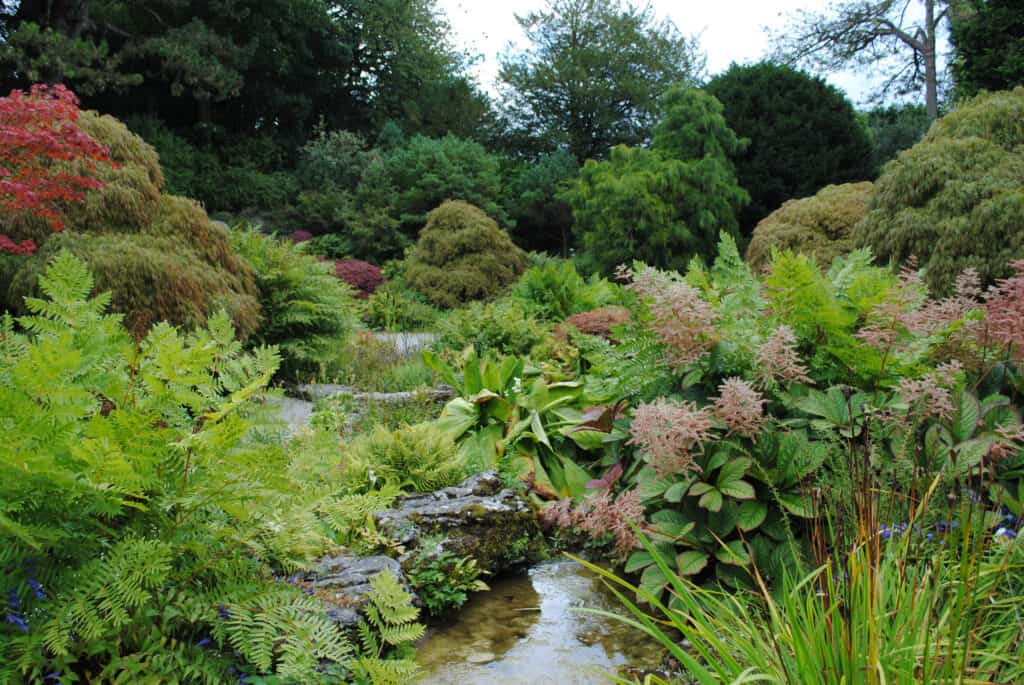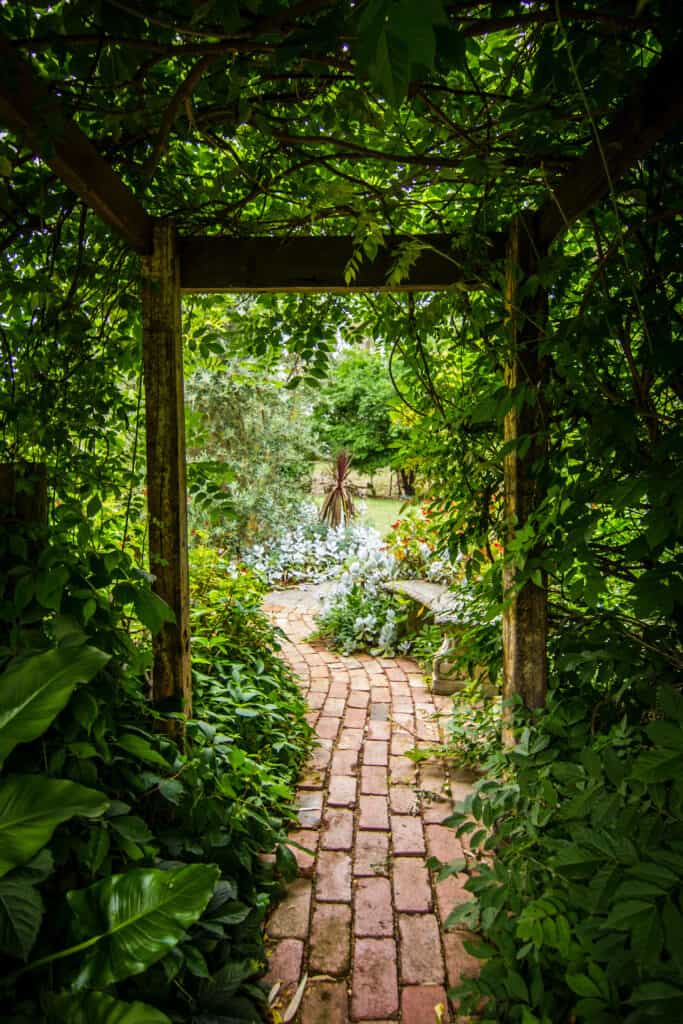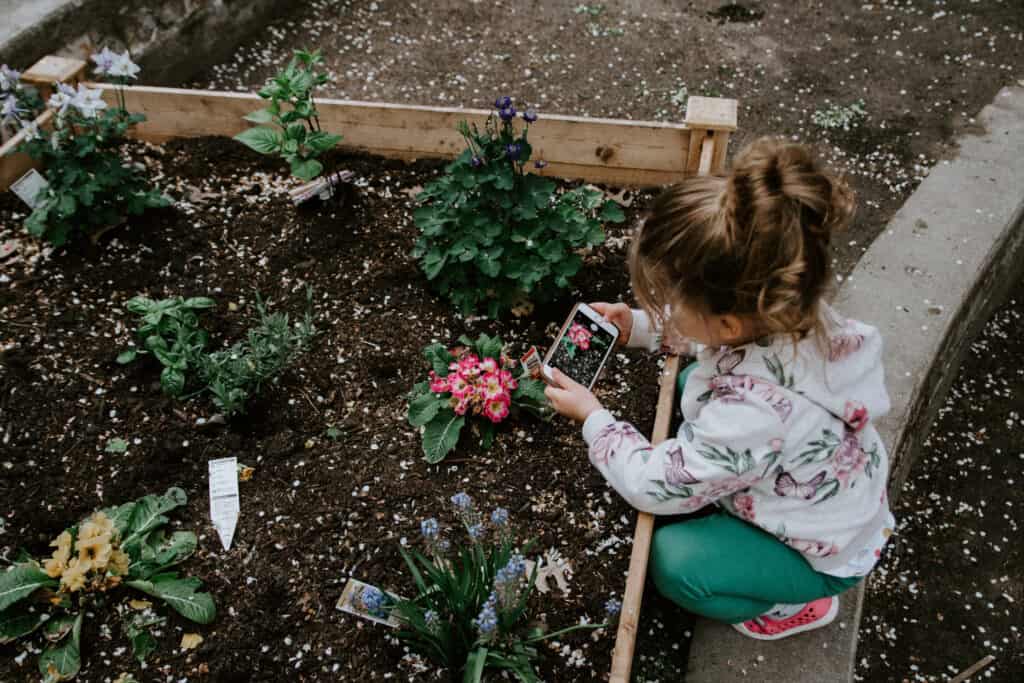It’s almost spring, when a homeowner’s fancy lightly turns to thoughts of landscaping and gardening. If that’s where your mind has been venturing lately, you’re not alone. And if you’re in the mood for something new and different than the same old look your home’s exterior has sported for years, why not consider getting trendy this year? Here are five emerging landscape design trends for 2023 that’ll spruce up your home beautifully.

Dump the Lawn Entirely
We know what you’re thinking — but take a deep breath. Yes, you’re absolutely allowed to eschew the glossy emerald expanse of a perfectly maintained lawn altogether. In fact, doing so will save water, trim maintenance expenses, and reduce or eliminate entirely your reliance on harmful pesticides and herbicides.
Swap out your high-maintenance grass for plants that are friendly to pollinators and much easier to care for, or create a lovely, wild meadow instead. Or build yourself a soothing rock garden, or even turn the entire yard into a food- and herb-producing garden.
You’ll want to check to make sure your plans are permissible under your local ordinances. Otherwise, the beauty of a lawnless yard is that there really aren’t any strict rules. You can create the look that’s right for your needs and lifestyle while helping the environment at the same time. That’s a trend we can get behind!
Going Local With Indigenous Plants
Avoid the merry-go-round of slavishly adopting generic gardening trends from national publications and embrace the indigenous bounty of our local region. Choosing indigenous plants helps ensure vibrant growth cycles, healthy plants, and less reliance on chemicals.
From trees such as gray birch, American beech, flowering dogwood, and Atlantic white cedar, to plants such as purple coneflower, black-eyed Susans, lady fern, and blue flag iris, this area is home to any number of vibrant plants that will thrive in local soil. Consider getting your soil tested and checking with your local cooperative extension office to make sure you’re choosing a good mix of indigenous plants that work with your home’s access to moisture and shade, as well as its soil type and pH.

Reuse and Recycle Landscape Materials
If you’re eco-conscious but not quite ready to eliminate the lawn completely just yet, try looking for landscaping materials and ideas from unusual sources. Repurposed building materials such as old bricks or reclaimed wood can provide imaginative, aesthetically pleasing borders and walkways for your landscape design.To get started, start digitally with a simple Google search for reclaimed landscaping materials near you. In addition to lumber yards and reclaimed wood suppliers, anything from nurseries to contractors can be a valuable resource. You may prefer to consult with a professional landscaper, however, since they’ll have existing connections and sources that might not be open to individual purchasers.
Bring the Outdoors In
Call it interiorscaping, or just bringing a bit of nature inside. Whatever you label it, staging your interiors with some healthy green houseplants, potted trees, and even interior courtyards will help you enjoy the lushness of nature all year long. You can adopt this trend in a number of ways:
• Add hardy plants to your entryway to help greet guests and residents, while providing a transitional space between the outside world and the comforts of home.
• Consider adding a dedicated greenspace to a room with excellent lighting and exposure, such as a sunroom or sitting room with an exterior wall.
• Think vertically by creating plant arrangements with variations in height along a single wall. Use planters, plant stands, trellises, hanging baskets, and other containers to create that height differential.
• Expand your houseplant collection by adding more unusual varieties for more color, texture, and visual interest. Look for plants with larger leaves and unusual shapes.
Consult with a professional gardener or landscaper to make sure you know how to care for your interior plants and to ensure nothing you bring inside presents a health risk to small children or pets.

Embrace Exuberant Maximalism
Maximalist design isn’t just for interiors anymore. You can go riotously bold and joyfully colorful out of doors, too. The general principle is to combine a variety of design elements, from color to volume, from height to texture.
Think “wild abundance” — lots of full, lush plants in raised beds with a variety of colors and leaf shapes to add height and breadth to your landscaping plan. Leave a safe walkspace to get around your yard to keep it looking intentional without verging into overgrown and messy.












!['The Maples' is a prestigious generational compound of two extraordinary estates: 18 Maple and 22 Maple. This rare offering, designed by luxury architect Lissoni partners New York and developed by visionaries Alessandro Zampedri-CFF Real Estate and JK Living, redefines opulence with the highest quality of craftsmanship and captivating views of the Atlantic Ocean. Represented by @nycsilversurfer and @challahbackgirl of @douglaselliman. [link in bio]](https://hamptonsrealestateshowcase.com/wp-content/uploads/sb-instagram-feed-images/438891010_1083749139481747_7890082604579275354_nfull.jpg)
![Featuring 360-degree water views on Mecox Bay, the Atlantic Ocean and Channel Pond, 1025 Flying Point offers the ultimate beach cottage that is flooded with natural light. With panoramic views, proximity to the ocean, and a private walkway to Mecox bay for kayaking or paddle boarding, this truly is a special retreat. Represented by @ritcheyhowe.realestate and @hollyhodderhamptons of @sothebysrealty. [link in bio]](https://hamptonsrealestateshowcase.com/wp-content/uploads/sb-instagram-feed-images/438994305_737511778456166_4602476013493875279_nfull.jpg)
![Attention advertisers! 📣 Secure your spot in the highly anticipated Memorial Day edition #HRES. Reach thousands of potential clients and showcase your brand in one of the most sought-after publications in the Hamptons, NYC, Palm Beach, and beyond. Contact us now to reserve your ad space! [link in bio]](https://hamptonsrealestateshowcase.com/wp-content/uploads/sb-instagram-feed-images/438549843_275102939023235_6718257301437562124_nfull.jpg)
![You eat with your eyes, and on the East End, it’s important that what you eat looks just as good as how it tastes. At @rosies.amagansett, the restaurant itself is plenty photo-worthy with blue ceramic tiling and yellow and white striped fabric wallpaper. But for a dish that will light up your photos, head directly to the salmon tartare! [link in bio]](https://hamptonsrealestateshowcase.com/wp-content/uploads/sb-instagram-feed-images/437094269_7296727147115953_1594410326824303644_nfull.jpg)

![We were honored to be the media sponsor for @blackmountaincapital's open house event with @jameskpeyton and @jfrangeskos at 11 Dering Lane in East Hampton! Other sponsors included @landrover, Feline Vodka, @rustikcakestudio, @la_parmigiana, @lahaciendamexicangrill11968, @homesteadwindows, Stone Castle, @talobuilders, and @thecorcorangroup.
A big thank you Carrie Brudner of Black Mountain Capital for putting together this fabulous event! [link in bio]](https://hamptonsrealestateshowcase.com/wp-content/uploads/sb-instagram-feed-images/437081213_762912965932136_6847332836522786568_nfull.jpg)

![Blooms Galore at the Long Island Tulip Festival! 🌷✨ Mark your calendars for April 15th as the vibrant tulips at @waterdrinkerlongisland burst into full bloom! Enjoy a day filled with colorful splendor, food trucks, live music, and more. [link in bio]](https://hamptonsrealestateshowcase.com/wp-content/uploads/sb-instagram-feed-images/437083429_974242677583725_6855805712693638343_nfull.jpg)
